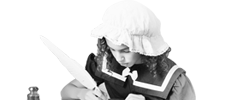High Sheriffs of Lancashire 1216-1261 by Colin Penny PhD
Part Two of a series
Jordan Fitz-Roger (1216-1222): Probably a brother of Gilbert fitz-Reinfrid, grandnephew to the Earl of Chester; he came from Southfleet in Kent, and was Dean of Manchester, he had a son – Roger.
Stephen de Segrave (1222-1223): Stephen had estates in Seagrave (Leicestershire), Chilcotes (Derbyshire) and Alkmunbury. He was born in 1176, at Seagrave, and was a retainer of Ranulph de Blundeville, Earl of Chester, whom he accompanied on crusade to the Holy Land. On their return, Ranulph granted Stephen the castle of Caludon, at the rent of one Sparrowhawk per year. He was married twice; his first wife was Rohese le Despencer (this marriage produced no children); his second was Ida de Hastings. The second marriage produced a son, Sir Gilbert de Segrave (born 1202). Stephen was a chief member of the unpopular faction of Peter de Roche; de Roche was a favourite of Henry III, came from Poitou in Normandy, and was appointed Bishop of Winchester. This connection ensured that Stephen received a number of important, and lucrative, appointments, and Lancashire was simply one of a number of shrievalties he held at the same time. In addition, under King John, he had been Constable of the Tower of London (1203), and was a Justiciar (1216). In 1230, whilst Henry III was in France, Stephen was regent of England; in 1231 he was sent to regulate affairs in the Welsh Marches, and in 1232, thanks to his ‘Poitouvin’ connections, was created Chief Justiciar of England. His connections, however, made him almost universally hated, and he eventually fell, along with the other ‘Poitouvins’, in 1234 – as a result, he was disgraced. The king, however, still needed able advisers, and despite this setback, Stephen was recalled to the king’s council in 1239, and soon became Henry’s chief adviser. He died on 9th November 1241, and was buried in Leicester Abbey. His son, Gilbert, died at Pons, Poitou, on 8th October 1254, following his capture during a campaign in Gascony. Interestingly, the de Segraves had important marriage connections with the de Ferrers (in 1297 Ellen de Segrave married Lord William Ferrers), and also with the de la Zouches.
William de Ferrers II (1223-1227): Earl of Derby, and the son of the Lord William Ferrers I who died at the siege of Acre in 1190. William was born in 1162, and married Agnes le Meschines, the sister and co-heiress of Ranulph de Blundeville, Earl of Chester, on 2nd November 1192; the marriage produced two children, William Ferrers III and Sybil de Ferrers. In 1218, William took part in the Crusades, and later took part in the disastrous attempt of Henry III to retake Poitou (1230). He was not sheriff of Lancashire, but Lord of the Honor of Lancaster, and as such could appoint his own sheriffs; as a result, Robert de Montjoy and Gerard Etwell were almost certainly two of his close supporters.
Gerard Etwell (1226-1227): Possibly from Etwall (Derbyshire). Interestingly, William Ferrers I, Earl of Derby, was born at Tutbury in Derbyshire, which is only a very short distance from Etwall. It is likely, therefore, that the Etwells (Etwalls?) were retainers of the de Ferrers, and this would explain Gerard’s appointment during a time when William de Ferrers II held the Honor of Lancaster.
Adam fitz-Roger (1228-1233): Second appointment – he is by now Lord of Yealand.
Peter de Rivaux (1232): A notorious favourite of Henry III. Along with his close relative, Peter de Roche, he was one of the leading ‘Poitouvins’; in 1232 he was appointed Treasurer of England and sheriff of 21 counties. In 1233, discontent at the favouritism displayed towards Rivaux and Roche led to the rebellion of Richard Marshall. Although this was quelled, Rivaux was dismissed, and Roche relegated to purely spiritual matters.
William de Lancaster III (1232-1240): Born 1182 in Barton, Westmoreland. The son of Gilbert fitz-Reinfrid, and one of the northern barons opposed to King John in 1215 (see leaflet I). He was Baron of Kendal and Lord of Wyresdale. William was married to Agnes Brus, of Skelton, Yorkshire (c.1215-1279), and they had one daughter, Alice de Lancaster of Windermere, who married Sir William de Lindsay, Lord Lamberton. The John de Lancaster listed below could possibly have been a son.
Gilbert de Whitby (1233): Unknown, either from Whitby in North Yorkshire, or Whitby, Cheshire (now Ellesmere Port). Given the very close proximity of the Whitby in Cheshire and Thornton Childer, it may have been the case that close ties existed between Gilbert and his successor as sheriff. He held lands in Lowther and Casterton in Westmorland.
Simon de Thornton (1234-1241): Unknown, but perhaps from Thornton, Merseyside (near Sefton), Thornton Childer (Cheshire), or from Yorkshire. The family was later related to the le Botelers.
Robert de Lathum (Latham) (c.1237): Of Lathum. Probably born c.1198; died before September 1286. He was married, in 1253, to Amicia de Alfreton (born c.1228). His grandson married Eleanor Ferrers, the great granddaughter of William Ferrers, Earl of Derby (see above). Robert was later knighted and served two further terms (see below).
William de Lancaster III (1241-1246): Second Appointment. Now Lord of the Honor of Lancaster.
John de Lancaster (1240-1241): Unknown, but a relative (son or brother) of William de Lancaster III who was Lord of the Honor at the time of his appointment. He was also related to Roger de Lancaster (see below)
Robert de Waterfall (1241-1246): Unknown.
Richard le Boteler (1241-1246): Perhaps linked with the house of Bewsey, Warrington. The le Botelers were related to the de Thorntons, and Richard replaced Simon de Thornton in 1241. It is probable that the family held lands much nearer to Lancaster, however; in 1281 a certain Ralph de Catterall allowed Henry, son of Richard le Boteler, to carry water from the river Calder across Stirzacre Marsh to his mill at Stirzacre in exchange for land in Catterall and a half rent.
Sir Matthew de Redmayne (1246-1249): From Levens. Born 1190 and died 1246. His father was Henry de Redmayne (sheriff of Yorkshire 1211-1214), and his mother, Margaretha; he had two brothers, Benedict and Norman. Matthew married a woman named Annabel, and had a son, Henry. He served as Seneschal of Kendal.
His grandson, also named Matthew, commanded forces against Robert the Bruce and David Bailliol. In the mid-14th century, the de Redmaynes built the first peel tower on the site of what is now Levens Hall.
Sir Robert de Lathum (1249-1254/55): Second appointment.
Sir Patrick de Ulvesby (1255-1259): Of Ousby (Ulvesby, Ulfsby) north of Penrith. His effigy in wood is in Ousby Parish Church.
Sir William de Boteler (1259): William, Baron le Boteler, of Wemme, married Angharad verch Gruffydd Maelor of Bromfield, Powys (probably in the early in 1260’s); they had a son, William II; William I died before 11th December 1281.
Sir Geoffrey de Chetham (1259-1261): Of Cheetham, Manchester








